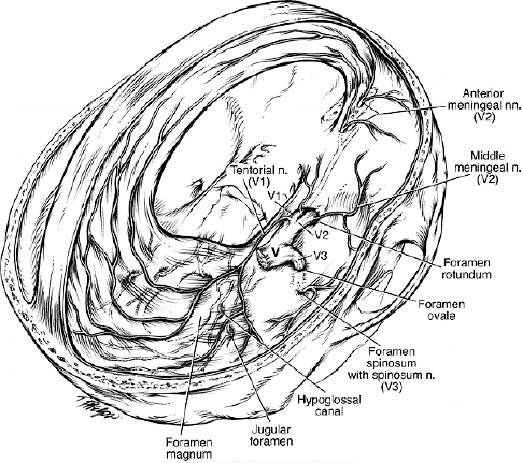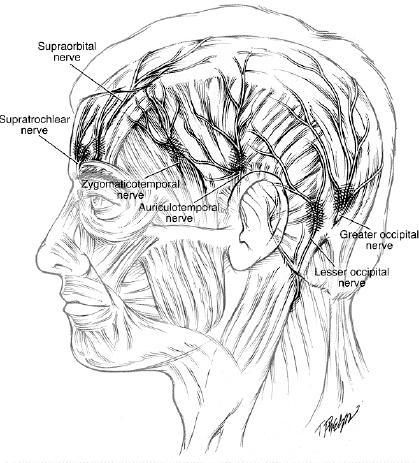1. Nemergut EC, Durieux ME, Missaghi NB, Himmelseher S. Pain management after craniotomy. Best Pract Res Clin Anaesthesiol. 2007; 21:557–73. DOI:
10.1016/j.bpa.2007.06.005. PMID:
18286837.

3. Gan TJ, Habib AS, Miller TE, White W, Apfelbaum JL. Incidence, patient satisfaction, and perceptions of post-surgical pain: results from a US national survey. Curr Med Res Opin. 2014; 30:149–60. DOI:
10.1185/03007995.2013.860019. PMID:
24237004.

4. Bebawy JF, Houston CC, Kosky JL, Badri AM, Hemmer LB, Moreland NC, et al. Nicardipine is superior to esmolol for the management of postcraniotomy emergence hypertension: a randomized open-label study. Anesth Analg. 2015; 120:186–92. DOI:
10.1213/ANE.0000000000000473. PMID:
25296247.
5. Basali A, Mascha EJ, Kalfas I, Schubert A. Relation between perioperative hypertension and intracranial hemorrhage after craniotomy. Anesthesiology. 2000; 93:48–54. DOI:
10.1097/00000542-200007000-00012. PMID:
10861145.

6. Schubert A. Cerebral hyperemia, systemic hypertension, and perioperative intracranial morbidity: is there a smoking gun? Anesth Analg. 2002; 94:485–7. DOI:
10.1097/00000539-200203000-00002. PMID:
11867362.

7. Seifman MA, Lewis PM, Rosenfeld JV, Hwang PY. Postoperative intracranial haemorrhage: a review. Neurosurg Rev. 2011; 34:393–407. DOI:
10.1007/s10143-010-0304-3. PMID:
21246389.

8. Verchère E, Grenier B, Mesli A, Siao D, Sesay M, Maurette P. Postoperative pain management after supratentorial craniotomy. J Neurosurg Anesthesiol. 2002; 14:96–101. DOI:
10.1097/00008506-200204000-00002. PMID:
11907388.
9. Hansen MS, Brennum J, Moltke FB, Dahl JB. Pain treatment after craniotomy: where is the (procedure-specific) evidence? A qualitative systematic review. Eur J Anaesthesiol. 2011; 28:821–9. DOI:
10.1097/EJA.0b013e32834a0255. PMID:
21971206.
11. Haldar R, Kaushal A, Gupta D, Srivastava S, Singh PK. Pain following craniotomy: reassessment of the available options. Biomed Res Int. 2015; 2015:509164. DOI:
10.1155/2015/509164. PMID:
26495298. PMCID:
PMC4606089.

12. Stoneham MD, Walters FJ. Post-operative analgesia for craniotomy patients: current attitudes among neuroanaesthetists. Eur J Anaesthesiol. 1995; 12:571–5. PMID:
8665879.
13. De Benedittis G, Lorenzetti A, Migliore M, Spagnoli D, Tiberio F, Villani RM. Postoperative pain in neurosurgery: a pilot study in brain surgery. Neurosurgery. 1996; 38:466–9. DOI:
10.1097/00006123-199603000-00008. PMID:
8837797.

14. Quiney N, Cooper R, Stoneham M, Walters F. Pain after craniotomy. A time for reappraisal? Br J Neurosurg. 1996; 10:295–9. DOI:
10.1080/02688699650040179. PMID:
8799542.

15. Thibault M, Girard F, Moumdjian R, Chouinard P, Boudreault D, Ruel M. Craniotomy site influences postoperative pain following neurosurgical procedures: a retrospective study. Can J Anaesth. 2007; 54:544–8. DOI:
10.1007/BF03022318. PMID:
17602040.

16. Mordhorst C, Latz B, Kerz T, Wisser G, Schmidt A, Schneider A, et al. Prospective assessment of postoperative pain after craniotomy. J Neurosurg Anesthesiol. 2010; 22:202–6. DOI:
10.1097/ANA.0b013e3181df0600. PMID:
20479664.

20. Gottschalk A, Berkow LC, Stevens RD, Mirski M, Thompson RE, White ED, et al. Prospective evaluation of pain and analgesic use following major elective intracranial surgery. J Neurosurg. 2007; 106:210–6. DOI:
10.3171/jns.2007.106.2.210. PMID:
17410701.

21. Gottschalk A, Yaster M. The perioperative management of pain from intracranial surgery. Neurocrit Care. 2009; 10:387–402. DOI:
10.1007/s12028-008-9150-3. PMID:
18830699.

22. Soumekh B, Levine SC, Haines SJ, Wulf JA. Retrospective study of postcraniotomy headaches in suboccipital approach: diagnosis and management. Am J Otol. 1996; 17:617–9. PMID:
8841709.
24. Gelb AW, Salevsky F, Chung F, Ringaert K, McTaggart-Cowan RM, Wong T, et al. Remifentanil with morphine transitional analgesia shortens neurological recovery compared to fentanyl for supratentorial craniotomy. Can J Anaesth. 2003; 50:946–52. DOI:
10.1007/BF03018745. PMID:
14617595.

25. Djian MC, Blanchet B, Pesce F, Sermet A, Disdet M, Vazquez V, et al. Comparison of the time to extubation after use of remifentanil or sufentanil in combination with propofol as anesthesia in adults undergoing nonemergency intracranial surgery: a prospective, randomized, double-blind trial. Clin Ther. 2006; 28:560–8. DOI:
10.1016/j.clinthera.2006.04.001. PMID:
16750467.

26. Stricker PA, Kraemer FW, Ganesh A. Severe remifentanil-induced acute opioid tolerance following awake craniotomy in an adolescent. J Clin Anesth. 2009; 21:124–6. DOI:
10.1016/j.jclinane.2008.06.032. PMID:
19329017.

27. Ayrian E, Kaye AD, Varner CL, Guerra C, Vadivelu N, Urman RD, et al. Effects of anesthetic management on early postoperative recovery, hemodynamics and pain after supratentorial craniotomy. J Clin Med Res. 2015; 7:731–41. DOI:
10.14740/jocmr2256w. PMID:
26345202. PMCID:
PMC4554211.

28. van der Zwan T, Baerts WD, Perez RS, de Lange JJ. Postoperative condition after the use of remifentanil with a small dose of piritramide compared with a fentanyl-based protocol in patients undergoing craniotomy. Eur J Anaesthesiol. 2005; 22:438–41. DOI:
10.1017/S0265021505000748. PMID:
15991506.

29. Guilkey RE, Von Ah D, Carpenter JS, Stone C, Draucker CB. Integrative review: postcraniotomy pain in the brain tumour patient. J Adv Nurs. 2016; 72:1221–35. DOI:
10.1111/jan.12890. PMID:
26734710.

30. Kim YD, Park JH, Yang SH, Kim IS, Hong JT, Sung JH, et al. Pain assessment in brain tumor patients after elective craniotomy. Brain Tumor Res Treat. 2013; 1:24–7. DOI:
10.14791/btrt.2013.1.1.24. PMID:
24904885. PMCID:
PMC4027119.

31. Kemp WJ 3rd, Tubbs RS, Cohen-Gadol AA. The innervation of the cranial dura mater: neurosurgical case correlates and a review of the literature. World Neurosurg. 2012; 78:505–10. DOI:
10.1016/j.wneu.2011.10.045. PMID:
22120554.

33. Standifer KM, Pasternak GW. G proteins and opioid receptor-mediated signalling. Cell Signal. 1997; 9:237–48. DOI:
10.1016/S0898-6568(96)00174-X.

36. Sudheer PS, Logan SW, Terblanche C, Ateleanu B, Hall JE. Comparison of the analgesic efficacy and respiratory effects of morphine, tramadol and codeine after craniotomy. Anaesthesia. 2007; 62:555–60. DOI:
10.1111/j.1365-2044.2007.05038.x. PMID:
17506732.

37. Roberts GC. Post-craniotomy analgesia: current practices in British neurosurgical centres--a survey of post-craniotomy analgesic practices. Eur J Anaesthesiol. 2005; 22:328–32. DOI:
10.1017/S0265021505000554. PMID:
15918378.
38. Kotak D, Cheserem B, Solth A. A survey of post-craniotomy analgesia in British neurosurgical centres: time for perceptions and prescribing to change? Br J Neurosurg. 2009; 23:538–42. DOI:
10.1080/02688690903100595. PMID:
19863401.

39. Stoneham MD, Cooper R, Quiney NF, Walters FJ. Pain following craniotomy: a preliminary study comparing PCA morphine with intramuscular codeine phosphate. Anaesthesia. 1996; 51:1176–8. DOI:
10.1111/j.1365-2044.1996.tb15065.x. PMID:
9038464.

40. Na HS, An SB, Park HP, Lim YJ, Hwang JW, Jeon YT, et al. Intravenous patient-controlled analgesia to manage the postoperative pain in patients undergoing craniotomy. Korean J Anesthesiol. 2011; 60:30–5. DOI:
10.4097/kjae.2011.60.1.30. PMID:
21359078. PMCID:
PMC3040429.

41. Morad A, Winters B, Stevens R, White E, Weingart J, Yaster M, et al. The efficacy of intravenous patient-controlled analgesia after intracranial surgery of the posterior fossa: a prospective, randomized controlled trial. Anesth Analg. 2012; 114:416–23. DOI:
10.1213/ANE.0b013e31823f0c5a. PMID:
22156333.
42. Rahimi SY, Alleyne CH, Vernier E, Witcher MR, Vender JR. Postoperative pain management with tramadol after craniotomy: evaluation and cost analysis. J Neurosurg. 2010; 112:268–72. DOI:
10.3171/2008.9.17689. PMID:
19630495.

45. Dahl JB, Nielsen RV, Wetterslev J, Nikolajsen L, Hamunen K, Kontinen VK, et al. Post-operative analgesic effects of paracetamol, NSAIDs, glucocorticoids, gabapentinoids and their combinations: a topical review. Acta Anaesthesiol Scand. 2014; 58:1165–81. DOI:
10.1111/aas.12382. PMID:
25124340.

46. Elia N, Lysakowski C, Tramèr MR. Does multimodal analgesia with acetaminophen, nonsteroidal antiinflammatory drugs, or selective cyclooxygenase-2 inhibitors and patient-controlled analgesia morphine offer advantages over morphine alone? Meta-analyses of randomized trials. Anesthesiology. 2005; 103:1296–304. DOI:
10.1097/00000542-200512000-00025. PMID:
16306743.
47. Smyth MD, Banks JT, Tubbs RS, Wellons JC 3rd, Oakes WJ. Efficacy of scheduled nonnarcotic analgesic medications in children after suboccipital craniectomy. J Neurosurg. 2004; 100(2 Suppl Pediatrics):183–6.

48. Williams DL, Pemberton E, Leslie K. Effect of intravenous parecoxib on post-craniotomy pain. Br J Anaesth. 2011; 107:398–403. DOI:
10.1093/bja/aer223. PMID:
21841050.

49. Dahl JB, Mathiesen O, Møiniche S. 'Protective premedication': an option with gabapentin and related drugs? A review of gabapentin and pregabalin in in the treatment of post-operative pain. Acta Anaesthesiol Scand. 2004; 48:1130–6. DOI:
10.1111/j.1399-6576.2004.00484.x. PMID:
15352959.
50. Chang CY, Challa CK, Shah J, Eloy JD. Gabapentin in acute postoperative pain management. Biomed Res Int. 2014; 2014:631756. DOI:
10.1155/2014/631756. PMID:
24829909. PMCID:
PMC4009126.

51. Mathiesen O, Wetterslev J, Kontinen VK, Pommergaard HC, Nikolajsen L, Rosenberg J, et al. Adverse effects of perioperative paracetamol, NSAIDs, glucocorticoids, gabapentinoids and their combinations: a topical review. Acta Anaesthesiol Scand. 2014; 58:1182–98. DOI:
10.1111/aas.12380. PMID:
25116762.

53. Clarke H, Bonin RP, Orser BA, Englesakis M, Wijeysundera DN, Katz J. The prevention of chronic postsurgical pain using gabapentin and pregabalin: a combined systematic review and meta-analysis. Anesth Analg. 2012; 115:428–42. DOI:
10.1213/ANE.0b013e318249d36e. PMID:
22415535.
54. Türe H, Sayin M, Karlikaya G, Bingol CA, Aykac B, Türe U. The analgesic effect of gabapentin as a prophylactic anticonvulsant drug on postcraniotomy pain: a prospective randomized study. Anesth Analg. 2009; 109:1625–31. DOI:
10.1213/ane.0b013e3181b0f18b. PMID:
19713257.

55. Vadivelu N, Kai AM, Tran D, Kodumudi G, Legler A, Ayrian E. Options for perioperative pain management in neurosurgery. J Pain Res. 2016; 9:37–47. DOI:
10.2147/JPR.S85782. PMID:
26929661. PMCID:
PMC4755467.

56. Blaudszun G, Lysakowski C, Elia N, Tramèr MR. Effect of perioperative systemic α2 agonists on postoperative morphine consumption and pain intensity: systematic review and meta-analysis of randomized controlled trials. Anesthesiology. 2012; 116:1312–22. DOI:
10.1097/ALN.0b013e31825681cb. PMID:
22546966.
57. Pinosky ML, Fishman RL, Reeves ST, Harvey SC, Patel S, Palesch Y, et al. The effect of bupivacaine skull block on the hemodynamic response to craniotomy. Anesth Analg. 1996; 83:1256–61. DOI:
10.1213/00000539-199612000-00022. PMID:
8942596.

59. Guilfoyle MR, Helmy A, Duane D, Hutchinson PJ. Regional scalp block for postcraniotomy analgesia: a systematic review and meta-analysis. Anesth Analg. 2013; 116:1093–102. DOI:
10.1213/ANE.0b013e3182863c22. PMID:
23477962.
60. Nguyen A, Girard F, Boudreault D, Fugère F, Ruel M, Moumdjian R, et al. Scalp nerve blocks decrease the severity of pain after craniotomy. Anesth Analg. 2001; 93:1272–6. DOI:
10.1097/00000539-200111000-00048. PMID:
11682413.

61. Batoz H, Verdonck O, Pellerin C, Roux G, Maurette P. The analgesic properties of scalp infiltrations with ropivacaine after intracranial tumoral resection. Anesth Analg. 2009; 109:240–4. DOI:
10.1213/ane.0b013e3181a4928d. PMID:
19535716.

62. Song J, Li L, Yu P, Gao T, Liu K. Preemptive scalp infiltration with 0.5% ropivacaine and 1% lidocaine reduces postoperative pain after craniotomy. Acta Neurochir (Wien). 2015; 157:993–8. DOI:
10.1007/s00701-015-2394-8. PMID:
25845547.

63. Agarwal A, Sinha PK, Pandey CM, Gaur A, Pandey CK, Kaushik S. Effect of a subanesthetic dose of intravenous ketamine and/or local anesthetic infiltration on hemodynamic responses to skull-pin placement: a prospective, placebo-controlled, randomized, double-blind study. J Neurosurg Anesthesiol. 2001; 13:189–94. DOI:
10.1097/00008506-200107000-00002. PMID:
11426091.
64. Johnson SM, Saint John BE, Dine AP. Local anesthetics as antimicrobial agents: a review. Surg Infect (Larchmt). 2008; 9:205–13. DOI:
10.1089/sur.2007.036. PMID:
18426354.

65. Woolf CJ, Max MB. Mechanism-based pain diagnosis: issues for analgesic drug development. Anesthesiology. 2001; 95:241–9. DOI:
10.1097/00000542-200107000-00034.
66. Kehlet H, Jensen TS, Woolf CJ. Persistent postsurgical pain: risk factors and prevention. Lancet. 2006; 367:1618–25. DOI:
10.1016/S0140-6736(06)68700-X.

67. Kehlet H, Dahl JB. Anaesthesia, surgery, and challenges in postoperative recovery. Lancet. 2003; 362:1921–8. DOI:
10.1016/S0140-6736(03)14966-5.







 PDF
PDF Citation
Citation Print
Print



 XML Download
XML Download